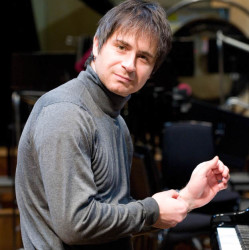 United Kingdom Schumann and Beethoven: Piotr Anderszewski (piano), London Symphony Orchestra, Sir John Eliot Gardiner (conductor), Barbican Hall, Barbican Centre, London, 10.2.2019 (AS)
United Kingdom Schumann and Beethoven: Piotr Anderszewski (piano), London Symphony Orchestra, Sir John Eliot Gardiner (conductor), Barbican Hall, Barbican Centre, London, 10.2.2019 (AS)

Schumann – Overture, Manfred, Op.115
Beethoven – Piano Concerto No.1 in C, Op.15
Schumann – Symphony No.1 in B flat, Op.38 (Spring)
The originally planned programme was to have contained the Schumann Piano Concerto, but the Beethoven was substituted at the request of the pianist. For some musicians, the First is their favourite of all the Beethoven piano concertos, despite it being quite an early work, and in a way one can understand why, since it has such charm, youthful vitality and some quite bold, innovative features for its time.
Initially there seemed much to admire in Anderszewski’s neat, classical approach to the first movement. His clean-cut, elegant and quietly expressive manner seemed to fit the music very well. But as the movement developed so did Anderszewski’s playing remain completely constant and unvaried, and a certain bland, routine quality became the dominant impression. Eliot Gardiner drove the tuttis along with a good deal of spirit, but there was – as throughout the concert – rather too much of an enthusiastic contribution from the timpanist (not the LSO’s usual principal), whose hard stick thwacks became tiring to the ear.
In the slow movement it was all change. Anderszewski’s playing at once developed a warmer, more overtly expressive nature, and his gently affectionate and fluent playing was a delight. It was back to sterner stuff for the finale, with Gardiner in particular attacking the music with some vehemence. Anderszewski’s fairly brittle, straightforward playing was appropriate in a way, but the latent humour of the music was not awakened.
For the concerto the orchestral players were conventionally seated. The strings were made to play without vibrato, though the occasional oscillating hand movements of at least one violinist betrayed a fall from grace.
Schumann’s Manfred Overture had started the concert. In this work and in the symphony that concluded the concert Gardiner made all the players (except cellos and basses) stand, as is his wont in early romantic repertoire. In the programme, he repeated his reasons for this course of action. “Without chairs the strings can stand closer together – they can hear each other and the sightlines are better. They can play like soloists”. The players’ view of this procedure is, so far as I know, unrecorded.
In any event the Overture was played in a splendidly virile, ardent fashion. At certain unexpected points Gardiner made expressive slowings down, which didn’t really help the musical argument, though it didn’t do much harm either.
The highpoint of the concert was Gardiner’s conduct of the Spring Symphony. Almost everything seemed just right, except that sometimes the slightly reduced, vibrato-less string sections became a little overwhelmed, not only by the over-athletic timpanist, but also the brass when playing at full tilt. But the way Gardiner launched whole-heartedly into the opening orchestral fanfare was most uplifting and throughout the Allegro molto vivace section of the movement his conducting was full of life, but not overdriven. Here and throughout the work his tempi were perfectly chosen. The Larghetto was infused with a lovely, romantic warmth, with some particularly beautiful phrasing, the Scherzo had a vigorous but still lilting rhythm, with the two trio sections perfectly pointed, and the finale, played like the opening movement with the repeat observed, had an appealingly and particularly high-spirited dance-like quality to elevate one’s spirit.
Have Schumann’s wonderful symphonies taken their rightful place in the repertoire at last? I hope so. A gratifyingly full audience seemed thoroughly to enjoy the performance, and the evening could have ended well on that high point. But we then had a delightfully played encore in the shape of the Scherzo from Mendelssohn’s Midsummer Night’s Dream music.
Alan Sanders
